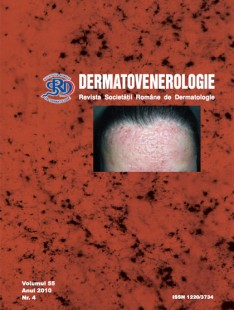Clinical cases
Atrophodermia vermiculata - a case report
Background:
Atrophodermia vermiculata together with keratosis pilaris atrophicans faciei and keratosis follicularis spinulosa decalvans belong to a group of closely related conditions characterized by keratosis pilaris and atrophy of the skin.
Clinical case:
A 32-year-old woman presented to our department because of a symmetric reticular atrophy of the face appeared since she has 14 years of age with progressive worsening in the next 5 years. The depressions of the skin were irregular in shape, with a diameter of 1–3 mm and a depth of about 1 mm, sharply defined and delimited by irregular bridges of epidermis resulting in a honeycomb appearance of the skin. The lesions are located on the forehead, cheeks, nose and pre-auricular area. Also a mild
seborrhea and erythema were noted on the face. The histopathological findings showed mild perifollicular and perivascular inflammation, perifollicular fibrosis and decrease in number and atrophy of the hair follicles.
Discussion:
Atrophodermia vermiculata is probable inherited in an autosomal recessive pattern. Clinical manifestations with reticular atrophy of the skin in a honeycomb appearance are characteristic. The course is generally slow, with progressive worsening.
Conclusion:
Atrophodermia vermiculata is a rare disease with distinctive clinical manifestations and histological appearance.


